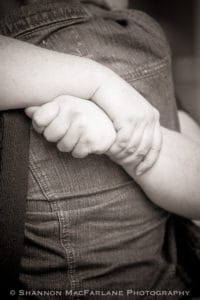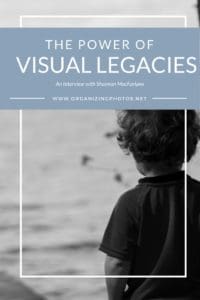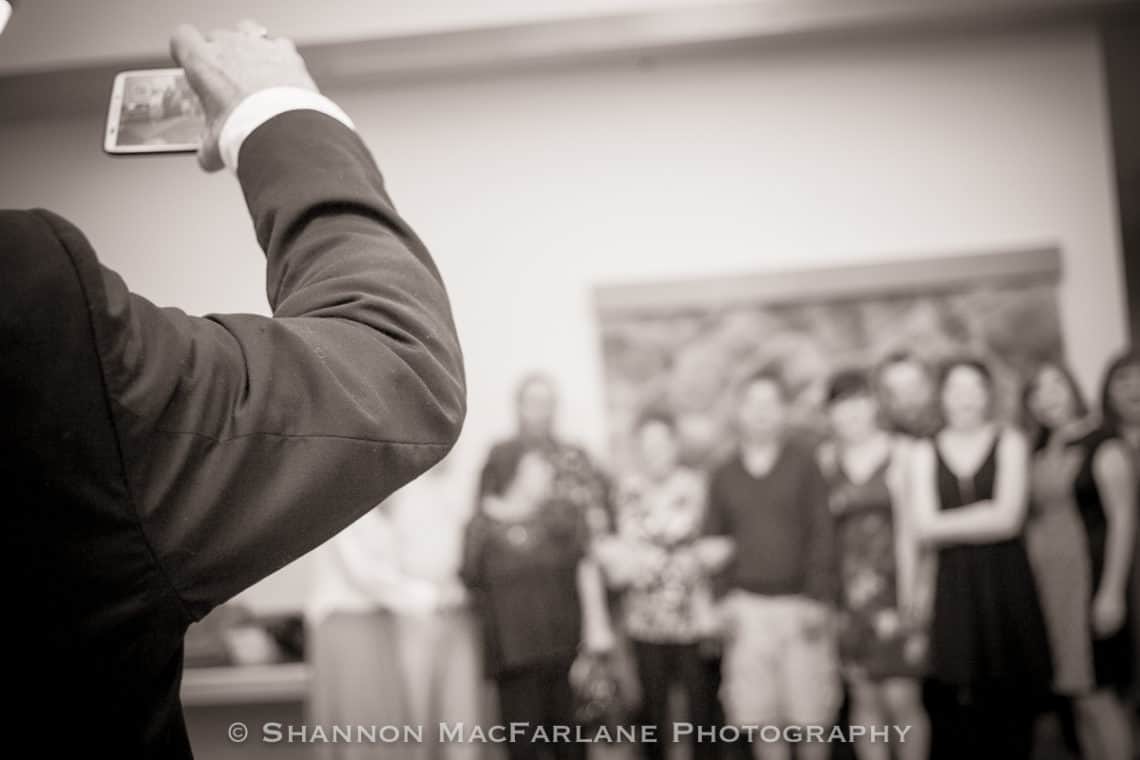Shannon Macfarlane isn’t just a photographer. She’s a storyteller like me, but with a different angle. Her beautiful work for families facing the most difficult times of their lives gives her a unique perspective of our industry and why what we do matters. I recently sat down with Shannon to to get her take on the power of visual legacies. I hope that her words will inspire you to tackle your own photo legacy, and realize just how important it is – not just for you, but for those that follow.
Why Visual Legacies are So Powerful
Being an avid genealogist, I’m always researching one ancestor or another. I find out when they lived, how they lived, when they died, and what they did for a living. Most of the time, I try to put myself in their shoes and see the world from their perspectives. It isn’t easy, but it’s incredibly enlightening. I also try to write their stories down in a narrative because I think they deserve it. Their stories are my story, after all. It’s all about how the I became the person I am now, and I have a deep sense of duty to share those stories with my daughter, and someday, her daughter in turn.
If there’s one thing that aids in storytelling, it’s the visual. You know this as well as I do. Photos tell a fuller story. If I think back to the ancestors I have truly connected with, it’s the people who have left photos or paintings behind. Their legacies are stronger because I can see them. I know what they looked like. I can see the tension in their faces, and the expressions in their eyes. Those are details I can’t get anywhere else, and they fill in the knowledge gaps about who they were as people.
This is true for everyone, don’t you think?
The New Normal
For those who have lost someone, a visual legacy can be the key to a living with a “new normal,” as Photographer Shannon MacFarlane puts it. She knows this because many of her clients find themselves in difficult situations. Shannon photographs families during their most personal moments. Sometimes, clients approach her after there’s been a loss in the family, but oftentimes she documents families as they “journey through hospice, long-term care, cancer treatment, organ donation, and the NICU.” In her own words, she witnesses families “as they honor their loved ones during funerals, memorials, grave-side visits, and the scattering of cremated remains,” and “as parents hold their children for the last time.”
As a fan of her stunning work, I wanted to hear Shannon’s take on visual legacies, and why what we do as photo professionals make a difference in people’s lives. We may have different means of getting there, but the end result is the same – we preserve stories, and because of Shannon’s unique position to witness the impact of photos first-hand, I felt like she would be the perfect person to put things in perspective for us all. A few weeks ago, I chatted with Shannon about this difficult topic, how she handles it, and what it all means to her.
Here’s what she said:
Shannon, how would you describe what you do?
Photography is a beautiful means to reflect back to people what is happening in their lives, and I usually refer to myself as a storyteller rather than a photographer. Every family has a story and every person a hero’s journey. It’s my work to bring that out, even when people assure me there is nothing interesting in their lives to photograph. There is always a story, and knowing how to tell it is an art while using the camera is a science.
I see myself as having a few roles that center around advocating for quality of life. I want to give people reasons to really think about the choices they make and the state of their relationships each day because I see how quickly circumstances change for families. Steven Covey was right in his advice to “begin with the end in mind” and envision what kinds of words will be said at your funeral. That’s what drives me to do this work. Families are important. Love is important. Relationships are important. Joy, fulfillment, integrity, authenticity… I want people to really live and understand that each moment is an opportunity that comes only once.
How would you describe your photos?
The style of photography I practice, which is usually referred to as documentary or reportage, is about witnessing and recording events. It is photography that does not lie. It doesn’t seek to misrepresent by showing someone 10 kg lighter and 15 years younger. This type of photography doesn’t show an amazing blue sky with dramatic clouds at sunset when the picture was taken at 2:00 p.m.on a cloudy day. It shows every little thing the way it really is, and I honor that in the processing of the images. Other than adjustments to achieve the best natural color and distribution of light in the image, I make no other changes. Life is like that. We all need to see the loveliness in what we have without it being Photoshopped. I believe this frankness contributes to the impact these pictures have.
How did photography impact your own life?
In 2013, my son began his life in the NICU. At the time I was a garden variety family photographer – a generalist. After an adverse pregnancy where my doctor told me that having my affairs in order would be a good idea, photography was a means for me to cope. Nothing can prepare a person for an experience like that. There are so many decisions. There is also so little sleep, and so much anxiety. It’s overwhelming. Taking pictures was meditative. It helped me transcend the ubiquitous beeps, so I could connect with my son. I photographed his monitors, his wires, his IV catheter, and his tubes. I photographed his beautiful toes and fingers. We didn’t know when, or if, our circumstance might change. I wanted to “see” as much as I could, when I could, because I knew the stress was impacting my ability to store and recall memories.
Photography required me to be present, and it gave me the space to not worry about what would happen in the next hour, or in the next day. When I look back on his pictures, I feel how I felt in the NICU. I hear it and smell it. I feel the weight of his tiny head that barely filled my palm the first time I held him. These pictures remind me how far he has come, and how far my husband and I have come as his parents. These photos connect me to our past, ground me in our present, and connect me to our future when I can share his story with him and his children.

© Shannon MacFarlane Photography. Used with Permission.
When did you realize this was what you were meant to do?
In 2014, I visited an acquaintance in the NICU to photograph her beautiful daughter. We had met in an online support group because her daughter and my son were born with the same condition (Omphalocele). While I was with her, it profoundly struck me that the pictures that I wanted to take and the stories I wanted to tell were the ones that were deeply moving accounts of critical milestones in their lives. I wanted to give them a glimpse of how beautiful those hard days can be. It’s an opportunity to gift their children, grandchildren, and great grandchildren with visual history. When I looked back on my son’s first year, I saw how his influence changed my photography and the clients I chose – more than 80% of the families I witnessed that year were living with, or had just resolved, a medical crisis. The following week, my business changed.
Who do you think photos are so helpful in the grieving process?
Honestly, I can’t imagine actively mourning without them. I see grief as an expression of love that is changing. Loss requires change, and so our love changes. In order to fully honor that, it’s helpful to see that love in different ways, and that’s where photographs come in. They can tell stories about relationships, events, and personalities. They prompt us to think about or remember things we might not have otherwise. It doesn’t matter if the grief is born of death, illness, or another kind of loss.
I hear from families how much the photographs help them adjust to their new normal, especially after the death of a loved one. This seems most prominent with parents who bury children, and adult children who bury parents. There is so much reflection and contemplation that happens with grief. Families turn to old photo albums to remember the trip to the Grand Canyon, the birthday when the cake fell off the table, the first piano recital… all of those moments that didn’t seem flashy or life changing, but now are the simple thread that pulls things together. They see their love. They see relationships. When they view the album from the memorial service, they see the product of all those little memories and experiences that collected over the years. It’s a full circle, and it’s a stunningly gorgeous thing to witness.

© Shannon MacFarlane Photography. Used with Permission.
What reactions do your photos get?
I hear very few words. People are taking in what were the most difficult days of their lives, and it’s hard to put words around that. I hear lots of gasps, sighs, sniffles, and the early peeps of wails. Sometimes, there’s laughter. I almost always hear the beginnings of sentences – a person will start to say something and find himself so struck by the image and the memory it conjures that he simply can’t complete the sentence. I stay with the families during their first viewings, and I see the relief, joy, overwhelm, shock, love, grief… There are so many emotions they experience in just the first few pictures. They are grateful. These pictures honor the most difficult moments of their lives. These pictures show the beauty and love that comes through during adversity.
What story stands out in your mind?
In 2015, I shared the worst day imaginable with a family. It was a family of three, with a mother, father, and three little boys. I had photographed their wedding, each pregnancy, babies, birthdays, and romps through the leaves every fall. The mother, who was a close friend and inspiration, had been diagnosed with leukemia. One evening, she called me and asked me to come over to take a few pictures. I knew then that these would be the last pictures she would be present for with her family. She wanted me to be with her family on her last night. Her husband called the next morning to tell me what I already knew. This family recently honored the first full year without her, and I celebrated her life with them with pictures, of course.
You can read Shannon’s full account of this story – The Last Bedtime Story on her blog..

I’m a Perfect Pinnable!
Do you do any photo organizing yourself?
In cases where the family is grieving rather than celebrating, I do the work of curating and organizing the images for them, so they receive a finished product that is ready for smiles and tears. For funeral and memorial services, I prepare books that honor their loved one and celebrate the impact that person had on the world through those who attended the service. I explain before we open the book that it’s meant to evoke emotions and start conversations. People frequently have strong reactions to the pictures that take them by surprise. I stand by to fill in details about the pictures and what was happening because stress can fuzz memories. I think of these pictures as conversation kindling for the grief fires that burn and smolder for the remaining days. Having the story in a book helps facilitate the beginning of those conversations. It becomes very natural.
I’ve seen versions of my own experience dozens of times over with the families I witness. Many are not sure they want photographs, and they sometimes need weeks or months before they feel ready to see them. Once people have had the time to process the pictures and story, which is usually a few weeks, I receive the thank-you phone calls and emails.
How do you think people can benefit from having their photos organized?
Pictures are the possession that people say they would grab on the way out if their homes were on fire. That says a lot. They are the most valuable things we own, and yet they languish in a sad state in various boxes, envelopes, and albums strewn about. They exist quietly because they are too overwhelming. It’s too much work to go through them and toss the blurry and unrecognizable. It’s hard to organize them. We embody the value we give to relationships and things in our treatment of them. This is easy enough to see with people. With objects it can be harder to realize, but when I value something I take care of it. I want it to last. It feels like an investment to me.
When pictures are valued as the family’s history, they are prized and displayed. I continue to be amazed by the pictures I see from my family that are more than 100 years old. Some of the stories have been lost along the way, but I see me in expressions and facial features. I feel deeply rooted and connected to something larger than myself. I can’t access that when I can’t find the pictures, and I can’t share any of that with my son, my husband, or my extended family, either. Since we developed language, man has relied on storytelling as the dominant means of recording history. Let’s use photographs to increase the impact of those stories and ease the burdens on our memories. Let’s keep telling the stories.

© Shannon MacFarlane Photography. Used with Permission.
Visual Legacies are for Everyone
Amazing, right? Shannon is a person who truly makes a difference, and that is the type of person I would like to be as well. I have a tremendous respect for her courage to tackle the difficult times as well as the good times because many photographers focus only on the latter. It’s hard to know what to say when someone experiences a loss. It’s hard to know what to do, and how to best offer help and support. She does it perfectly, and in a way that keeps the passed person’s memory alive. Shannon explained to me that most of her clients are “thoughtful, well educated, and open-minded people who value experiences over things, and are very much focused on showing up authentically in their relationships.” They “highly esteem their families and believe in the powers of empathy, compassion, and vulnerability.” That description certainly fits me, and I would hope that it fits you too.
Creating a visual legacy is powerful, and I encourage you to do that for your family. You don’t have to wait until someone passes. You can start now – by documenting your own life, and your loved one’s lives. Not that every photo or video always tells the whole truth – we all know they’re subjective at times – but when it comes to capturing emotion, it goes far beyond what a written story can do for you. Organizing your photos is about more than just placing them neatly in a row. It’s about showcasing and telling the stories that make a difference. Your life story is one that only you can tell to the fullest, and your photos are the perfect foundation. Take care of them because they showcase what truly matters in life – your family. As they say: “a picture is worth a thousand words.”
Editor’s Note: For more information on Shannon’s work, please visit http://www.shannonmacfarlanephotography.com.
All images are © Shannon MacFarlane Photography. Used with Permission.






liz S.
November 1, 2016 at 10:14 amBeautiful article! You are a great writer and one of the only I consistently read regarding organizing photos. Thanks for sharing!!
Caroline Guntur
November 1, 2016 at 10:53 amThank you Liz! I’m so glad to hear that!